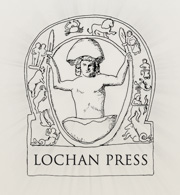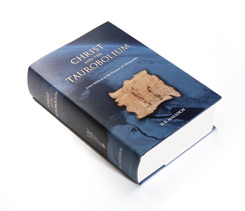|
Christ and the Taurobolium is a 10,000 year history of the deity Mithras,
who is better known today as Christ
The author presents a history of Western religion with a revisionary history of the Christian Church. The work concentrates on the role of Mithraism in the development of Christianity and focuses on a revisionary review of the New Testament.
This book will stimuate examination of the Bible and will inject life and vitality into the thoughts, discussions, study, and practice, of Christianity and other contemporary religions. The central thesis that Christianity is a remodelled form of Mithraism, if correct, could radically mdify how the West views its religion.
Christianity would be no longer be a religion of the Book (The Old Testament); only Judaism and Islam would remain as religions of the Book. Christianity would have to be reclassified as an Indo-Aryan religion supplemented by the Goddess religions of Isis, Cybele, and Astarte.
This revised view reveals the reason why there are remarkable parallels between the Hebrew fundamentalists’ animosity to the Hellenistic culture in the first century AD and the animosity of the fundamentalist Muslims to the descendants of the Hellenists, the present-day Western culture.
Mithraism was the foremost religion of the Roman Empire. It ostensibly disappeared without a trace in the fourth century AD, supposedly because of the success of Christianity. Mithraism did not disappear: in the middle of the 4th century it accepted the feminine principal into its credo whereupon Emperor Theodosius the Great rebranded this feminised Mithraism as Christinity and made it the only legitimate religion in the Empire. He anathematised all others. Before this date there were no Christians, only Galileans and Nazarenes, who were the followers of the various forms of Christ.
The story of the rise and rise of Mithraism and its metamorphosis into Christianity is the essence of the book, Christ and the Taurobolium - Lord Mithras in the genesis of Christianity . The story is presented in three parts:
PART I Prepare the way of the Lord (20,000bc28ad)
Concerns religion in general in the Middle East with particular emphasis on Mithraism and its journey from the Russian Steppe, through the Caucasus, Iran, Babylon, Tarsus (in Cilicia), to Rome.
PART II Anno Domini Apollo (2876 ad)
Presents a detailed revision of The New Testament as inter-cultural polemical documents which were much influenced by Mithraisms. In the exegesis of the New Testament evidence emerges that St Paul was the chief executioner of Jesus the Messiah.
PART III The Triumph of Mithraism (76550 AD)
Presents the rise of Mithras as the equal to Almighty God and the only intermediary deity of note in the Roman pantheon. Finally, after masquerading under the epithets of Apollo, Helios, Oriens, and Sol Invictus he gained the name of Xristos (the anointed and superlative one).
The following questions stimulated the writing of Christ and the Taurobolium:
 |
Who actually killed Jesus Christ? |
 |
Why is sacrifice the prime rite of religion? |
 |
Why do the pious consume their God? |
 |
What did Jesus hope to achieve? |
 |
Why were the Gospels written? |
 |
What is the true meaning of the cross? |
 |
What happened to Mithraism? |
 |
Is Christianity really a religion of the ‘Book’? |
 |
Is the term Judaeo-Christian a misnomer? |
 |
Are the Synoptic Gospels Christian? |
 |
Was St Paul a Gnostic initiate of Mithras? |
 |
Who was Christ? |
 |
Do the loaves and fishes miracles have meaning? |
 |
What is the meaning of the story of the Prodigal Son? |
 |
What was the reason for the Sermon on the Mount? |
 |
Does St Paul deserve his title? |
 |
Does St Peter lie under the altar of St Peter’s, Rome? |
 |
Why is there antipathy to the Jews? |
 |
Is the reason for 9/11 3000 years old? |
|



